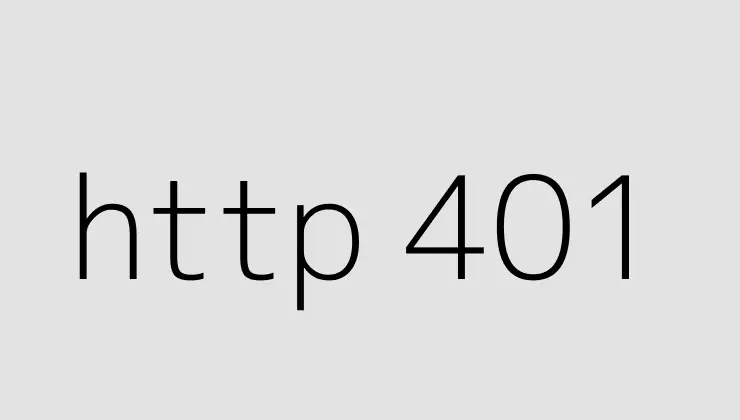“Web sitemize erişim için yetkisiz kullanıcılar tarafından yapılan giriş girişimleri, 401 hata kodu ile karşılanır. Bu yazımızda, HTTP 401 hatası hakkında detaylı bilgilendirme yapıyor ve çözüm önerileri sunuyoruz. Aradığınız bilgi için hemen tıklayın.”
Introduction
HTTP 401 error is a common error code that can occur while accessing a web page or a web application. The error typically means that the user is not authorized to access the requested resource. This error can be frustrating for both the user and the website owner. In this article, we will explore the causes of the error, its solutions, and prevention techniques.
Causes of HTTP 401 Error
There are several reasons why you may encounter an HTTP 401 error. Some of the common causes include:
Invalid Credentials
This is one of the most common causes of HTTP 401 errors. If you are trying to access a password-protected area of a website and you enter the wrong username or password, you will receive an HTTP 401 error.
Expired Login Sessions
Some websites have a time limit on their login sessions. If you don’t log out of the website when you’re finished, your session may expire. When you attempt to access the website again, you may receive an HTTP 401 error.
Missing Authorization Tokens
Some websites may require an authorization token to access certain resources. If you don’t have the required token or if the token is invalid, you may receive an HTTP 401 error.
Solutions for HTTP 401 Error
Now, let’s look at some of the solutions to fix HTTP 401 errors.
Check Your Credentials
If you are accessing a password-protected area of a website, make sure that you have entered the correct username and password. If you are unsure of your credentials, you can try resetting your password.
Clear Your Browser’s Cache and Cookies
Sometimes, a cached copy of a web page may be causing the HTTP 401 error. To fix this, you can try clearing your browser’s cache and cookies.
Check Your Authorization Tokens
If the website requires an authorization token, make sure that you have the correct token or generate a new one if required.
Prevention Techniques for HTTP 401 Error
Implement a Secure Login System
Make sure to implement a secure log-in system for your website that verifies the user’s login credentials before granting access to protected resources.
Implement Session Timeouts
Implement session timeouts for your website to prevent unauthorized access.
Use SSL/TLS Certificate
Use a SSL/TLS certificate to encrypt all sensitive information exchanged between your website and its users. This will protect against man-in-the-middle and other security attacks.
Conclusion
HTTP 401 errors can be frustrating but they are not the end of the world. By implementing the solutions and prevention techniques mentioned in this article, you can avoid these errors and ensure that your website and its resources are protected.
FAQs
1. What is an HTTP 401 error?
HTTP 401 error means that the user is not authorized to access the requested resource.
2. What are the common causes of HTTP 401 error?
The common causes of HTTP 401 error include invalid credentials, expired login sessions, and missing authorization tokens.
3. How to fix HTTP 401 error?
To fix HTTP 401 error, you can check your credentials, clear browser’s cache and cookies, and check authorization tokens.
4. How to prevent HTTP 401 error?
You can prevent HTTP 401 error by implementing a secure log-in system, implementing session timeouts, and using SSL/TLS certificate.
5. Why is it important to prevent HTTP 401 errors?
It is important to prevent HTTP 401 errors because they can compromise the security of your website and its resources.













